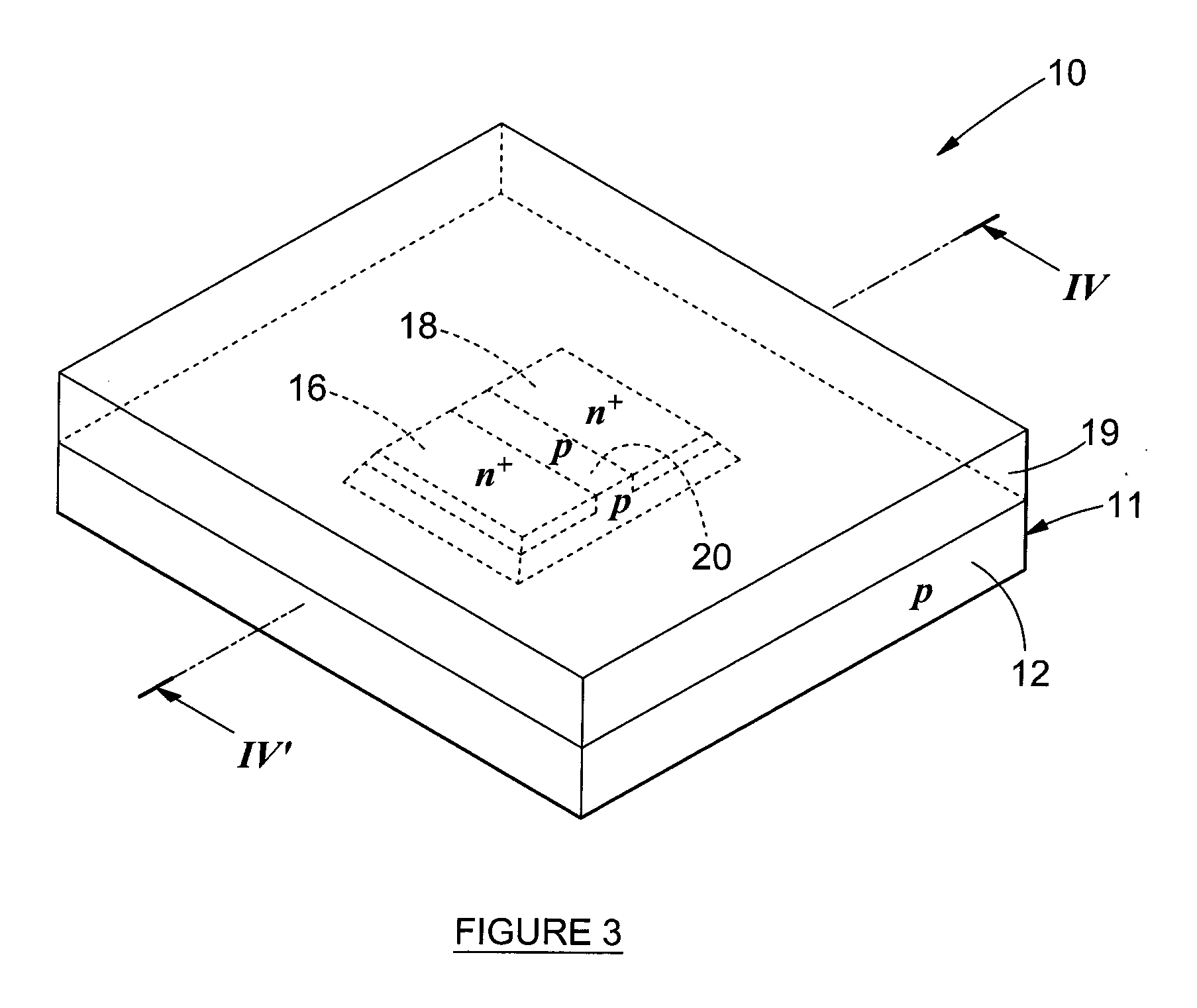Silicon light emitting device and method of fabricating same
a technology of light-emitting devices and silicon, which is applied in the direction of semiconductor/solid-state device manufacturing, semiconductor/conductor devices, electrical devices, etc., can solve the problems of barriers formed between mutually facing faces
- Summary
- Abstract
- Description
- Claims
- Application Information
AI Technical Summary
Benefits of technology
Problems solved by technology
Method used
Image
Examples
Embodiment Construction
[0040]A light emitting device according to the invention is generally designated by the reference numeral 10 in FIGS. 3 and 4.
[0041]The light emitting device 10 comprises a body 11 comprising a substrate 12 of a semiconductor material. In the example embodiment shown, an indirect bandgap semiconductor material, in the form of silicon, of a first doping kind p and a first doping concentration is used. The substrate has an upper surface 14. A first island 16 of a second doping kind and a second doping concentration n+ and a second island 18 of a third doping kind and a third doping concentration (in this case also n+) are formed on one side of the upper surface 14 of the substrate 12 according to a standard bulk semiconductor fabrication process (such as a standard sub-micron process, such as a standard 0.35 μm CMOS process) utilizing lateral device isolation techniques utilizing lateral active area physical isolation (such as LOCOS or STI). The first island is embedded in the substra...
PUM
 Login to View More
Login to View More Abstract
Description
Claims
Application Information
 Login to View More
Login to View More - R&D
- Intellectual Property
- Life Sciences
- Materials
- Tech Scout
- Unparalleled Data Quality
- Higher Quality Content
- 60% Fewer Hallucinations
Browse by: Latest US Patents, China's latest patents, Technical Efficacy Thesaurus, Application Domain, Technology Topic, Popular Technical Reports.
© 2025 PatSnap. All rights reserved.Legal|Privacy policy|Modern Slavery Act Transparency Statement|Sitemap|About US| Contact US: help@patsnap.com



